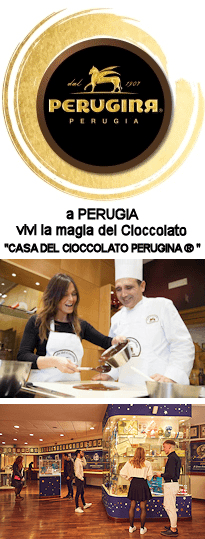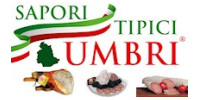Umbria’s leading quality export is extra-virgin olive oil. The main production areas are in the foothills of the Apennines, the Colli Martani and the hills around Amelia, Lake Trasimene and Orvieto. All these areas are listed in the application made by the Regione Umbria for gaining the Denominazione di Origine Controllata DOC Umbria quality denomination.
The olive has been cultivated in Umbria since Antiquity, first by the Etruscans and successively by the Romans, who established a sizeable production of extra-virgin olive oil in the region. As a symbol of peace, the olive stands for Umbria also thanks to its associations with St Francis of Assisi.
Due to the particularly favourable climatic and terrain conditions in Umbria, with the soil generally of a low acidity level, the olive oil produced in the region has a unique fruity flavour. The main varieties of olive that go into the D.O.P. “Umbria” denomination olive oil are Moraiolo (Colli Assisi-Spoleto), Leccino (Colli Orvietani), Frantoio (Colli Martani – Colli Amerini – Colli del Trasimeno), San Felice (Colli Martani), Pendolino, Agogia (typical of Lake Trasimene), as well as Raggio, Rosciola, Canino, Maurino and other varieties in smaller proportion.
Alongside Tuscany, Piedmont and the Marche, Umbria is among the main truffle producing regions of Italy – mostly the black variety, some white and the so-called scorzone estivo summer black truffle. Clearly the most prized truffles are white and in Umbria they are gathered from October through to December, although in places that are particularly sheltered from frost they can still be found into January. This variety needs virtually no processing in the kitchen, and is probably at its best just simply sprinkled in shavings over pasta.
Black truffles grow in the Upper Tiber Valley, around Gubbio, Gualdo Tadino and also near Orvieto. This is the most common variety of truffle and matures from November through to March. It can also be found along the river Nera, in the hills behind Spoleto, in the Monti Martani, around Trevi and on Mount Subasio. Generally cooked before serving, black truffles are used as a condiment for pasta as well as in game dishes.
Below is a list of other typical Umbrian foods and produce:
- Castelluccio di Norcia lentils. Very small in size, this variety nonetheless stands out for its exceptional taste. Grown at an altitude of 1,500 metres above sea level, Colfiorito lentils are harvested by hand and are ideal for soups, minestrone or risottos.
- Colfiorito red potato. Intensely flavoured, the Colfiorito red potato is long ad oval in shape, with bright yellow flesh. Frequently employed to make gnocchi.
- Cured meats. Chiefly produced in the area around Norcia, the tradition in Umbria of preserving meat in all its varieties – from salame to prosciutto and more – goes back a long way. In Italy the term norcinerie is used broadly to describe all cured meats and derives from Roman times, when the butchers of Norcia already enjoyed a reputation for this particular craft.
Among the most typical varieties of Umbrian salame are the Mazzafegato (sweet or savoury liver sausages that can be eaten either fresh or cooked) and the Sanguinaccio (made with pig’s blood, white wine, spices and orange rind). The area around Nocera Umbra is also known for its assortment of cured deer meat such as fiocco or filetto di daino (boned steak deprived of its fat), bocconcini di daino (small fine minced sausages), cacciatorini di daino (seasoned sausages) and deer prosciutto (boned and salted thigh of the animal).
- Umbrian cheeses and dairy produce. Umbria boasts a long-standing tradition, both in sheep farming and, consequently, cheese-making. Among the region’s best known cheeses are its caciotta, crescenza (a fresh, creamy cheese), black truffle cheese, scamorza, mozzarella, ricotta, pecorino, provolone, nanetta (fresh, un-fermented cheese) and ravigiolo.
- Trevi black celery. This historic vegetable is one of Umbria’s most unique products and could well aspire to the DOP quality denomination label. As implied by its name, the colour is darker than normal green celery, and the stalk retain its characteristic dark green colour until the plant reaches maturity.
- Cannara onion. Cannara is a small town not far from Bevagna. The characteristic onions that are grown here come in three different varieties: yellow, flat and red. Cannara onions are used in a variety of different dishes, from onion soup – or cipollata, made with onions, tomato and eggs – to salads and even as the ideal accompaniment to strong tasting game.
- Cascia saffron. This prized gold coloured powder comes from the stamens of a variety of crocus - Crocus Sativus, whose flowers are purple. After harvesting, the stamens are placed to dry by the fireside.
Anyone interested in finding out more about the tastes, customs and traditions of Umbria should, in the words of Italo Calvino, “… absorb its food or, better still, eat of the land” (Sotto il sole giaguaro, Mondadori, Milan, 2002).
With such a wealth of culinary tradition at hand, it is a pity not to stop by in one of the region’s many traditional restaurants and trattorie in the old town centres of magnificent cities such as Orvieto, Assisi, Perugia, Spoleto, Gubbio or Foligno. Visitors should also bear in mind that Umbria’s agriturismi farmhouse residences also frequently serve meals, with the added benefit of using exclusively produce directly from the farm.
Should you be interested in stocking up on Umbrian delicacies to take home with you, it should not be difficult to spot one of the many traditional fine food shops and delicatessens in the old town centres of all major towns and cities. Alternatively, consult the list of Umbrian food producers and consortiums below:
Wines:
- Consorzio Vitivinicolo Perugia – COVIP
- Consorzio Vini di Montefalco DOC
- Consorzio per la tutela della Denominazione di Origine del Vino Orvieto Classico e Orvieto
- Azienda Agricola Vignabaldo
- Rocca di Fabbri
- Cantina Colli Amerini
- Cantina Lungarotti
- Azienda Agricola La Fiorita
- Agricola Goretti Produzione Vini
Olive oil:
- Consorzio Regionale Olio Extravergine di Oliva Tipico Umbro
– CO.RE.Ol.
Truffles:
- Urbani Tartufi
- Collesilva Tartufi
Cured meats:
- Renzini Salumi
Cheeses and dairy products:
- Consorzio Regionale Umbro fra Cooperative Produttori e Trasformatori Latte
Lentils:
Cooperativa della Lenticchia di Castelluccio di Norcia
Our network:
Wednesday 20 November 2024
Typical Umbrian produce, where to buy and where to tasteAll'inizio |

| THEMATIC HOLIDAYS | go |
• Ancient documents and illuminated manuscripts
• Renaissance Umbria
• Umbria the Poet’s Muse
• Umbria With the Kids: Perugia’s Città della Domenica
• Golf & Art in Umbria
| WINE AND FOOD | go |
• Typical Umbrian dishes
• Umbrian cuisine
• Typical Umbrian produce, where to buy and where to taste
• Typical Umbrian food
• Wine Tours in Umbria
• Umbrian Wines and Regional Wine Trails
• Enoteche, vinerie and wine bars in Umbria
• Umbrian Wines
• Wineries and wine tasting in Umbria
| ITINERARIES | go |
• Contemporary art in Umbria
• The female saints of Umbria
• Benedictine monasteries
• Ancient castles and fortresses
• Guided tours and itineraries in Umbria

| PARKS AND NATURE RESERVES | go |
• Lake Trasimene
• Parco Fluviale del Tevere
• Parco Regionale del Lago Trasimeno
• Parco Regionale del Monte Subasio
| WHAT TO SEE & DO | go |
• Cooking courses in Umbria
• The Nahar adventure park, enclosed within one of Italy 's largest alpaca farming areas, offers tourists the chance to spend a day experimenting new sports and generally having a good deal of fun in an unparalleled natural setting!
• PIERMATTEO D’AMELIA and the Renaissance in Southern Umbria
• FRANTOI APERTI Following the DOP Umbria quality olive oil trail
• Wedding in Umbria
• MAP of UMBRIA to travel in Umbria
• Tourist guides of Umbria
• Quality produce - sustainable success stories
• Oil mills and producers across the region Umbria
• Academies, Schools in Umbria and Italy
• Exhibition Perugino, divine painter
• Itineraries & Packages
Booking.com
• Beauty Farms in Umbria
• Wellness in Umbria: opportunities for tourists
• Spiritual Retreats in Umbria
• Dermocosmetici Oro of Spello for protecting your skin
• Wellness in Umbria
• Rafting
• Paragliding and Hang-Gliding
• Horse Riding in Umbria
• Golf in Umbria
• Umbria by Bike
• Getting married in Umbria
• SM.MA. rental of equipment, marquees and gazebos for catering and banqueting
• Company meetings in Umbria
• Venues and Entertainers for Events in Umbria
• San Gemini - Centro Congressi
• Park Hotel ai Cappuccini in Gubbio
• Events and Cerimonies in Umbria – Deals and Offers
• Conferences and Conventions – the Advantages of Choosing Umbria

• Textiles and Lace-Making in Umbria
• Deruta Ceramics
• Cabinetmaking in Città di Castello
• Woodcarving in Umbria
• Ceramics in Umbria Art and Tradition
• The Ceramics of Deruta

| BEAUTY & WELLNESS | go |
• Wellness in Umbria: opportunities for tourists
• Spiritual Retreats in Umbria
• Dermocosmetici Oro of Spello for protecting your skin
• Wellness in Umbria
| SPORT | go |
• Paragliding and Hang-Gliding
• Horse Riding in Umbria
• Golf in Umbria
• Umbria by Bike
| WEDDING | go |
| MICE (MEETING INCENTIVES CONFERENCES EVENTS) | go |
• Company meetings in Umbria
• Venues and Entertainers for Events in Umbria
• San Gemini - Centro Congressi
• Park Hotel ai Cappuccini in Gubbio
• Events and Cerimonies in Umbria – Deals and Offers
• Conferences and Conventions – the Advantages of Choosing Umbria

| HANDICRAFT | go |
• Deruta Ceramics
• Cabinetmaking in Città di Castello
• Woodcarving in Umbria
• Ceramics in Umbria Art and Tradition
• The Ceramics of Deruta









